#hungarian history
Text
A few days ago I saw some Ducktales here and decided to write about one of my favourite Hungarian historical moments, but then I realized that the anniversary is in less than a week, so I scheduled this post exactly on the 30th anniversary even for the minute, at 18:08 CET. (Edit: fuck Tumblr, it messed up scheduling, but second part is on its way)
So let me to present you the story of the Ducktales generation of Hungary, the children born in the 80s, who were traumatized by the aforementioned cartoon exactly 30 years ago, on December 12th 1993 at 18:08.
The year is 1993. The ill-fated little Central-European Hungary is barely out of the more than 40 years of terrible communist dictatorship, it only elected it's first in decades democratic government in 1990 and the last occupying Soviet soldier left the the country in the Summer of 1991.
The first media war is on full rage, meaning that there is still only two, government owned, tv channel, (and time to time HBO, if you were at the right place at the right time) but unlike during the socialism, Western programmes are allowed. This two facts together mean that every time there is a kid's programme on, practically every children who has access to tv, watches it.
Every Sunday afternoon is for Walt Disney, but most importantly for Ducktales. This one has a chokehold on every kid, the absolutle favourite. (Interestingly never became popular for any other generations in Hungary, unlike other iconic programmes, despite being aired a few more times in the following decades.)
So we get to the Sunday of December 12th. Allegedly 2.2 million children is in front of the tv, accompanied by many adults. The episode "A Whale of a Bad Time" is at its emotional high. Scrooge McDuck (or as we know him, Uncle Dagobert) is histerically jumping on the dinner table, because the ship with his money is lost. At 18:08 one of the most famous last sentence is said: 'A sea monster ate my ice cream!!!'
The screen goes black and white, the programme stops, blackness, then the grey channel logo shows up and Chopin's Funeral March starts playing. For long minutes nothing happenes, except of course for the hundreds of thousands of kids having a temper tantrum. By the time the March is coming to the end, even more adults are in the room, either because of the screaming kid or the sudden change of mood.
After 2 whole minutes again a moment of blackness, then a fat, old man in thight black suit comes up with a flag in the the background.
For many of the children watching, this was the first time to ever come to contact with politics, and for some of them, with death. Because the man, Péter Boross, who at that first moment still unbeknownst to the audience had already been the Prime Minister for less than an hour, had an important message:
'Fellow citizens, Hungarians, here at home and around the world. Destiny gave me a painful duty. Dr József Antall, Prime Minister of Hungary today after 5 pm passed away.'
Of course the passing of the reigning Prime Minister would be breaking news everywhere, especially if he is the first democratically elected one in more than 40 years, but this event became more important for a different cause.
#hungary#hungarian#hungarian history#hungarian politics#magyar#magyarország#magyar történelem#magyar politika#kacsamesék#ducktales#scrooge mcduck#dagobert bácsi#antall józsef#boross péter#rendszerváltás#flashbulb memory#vakuemlékezet#not star wars
83 notes
·
View notes
Text
A Kacsamesék megszakítása / The interruption of Ducktales
Skip to 2:34 for the important part
The "Interruption of Ducktales" is a flashbulb memory that burned into the memories of many Hungarian people.
In the evening of december 12nd 1993 the episode "A Whale of a Bad Time" was aired on the first channel of the Hungarian television. It was Sunday, many children watched as Scrooge McDuck (Dagobert bácsi) became angry because a sea monster ate his ice-cream.
"Egy tengeri szörny felfalta a fagylaltomat!"

A moment after that the scene with the McDuck family dissapeared and the MTV logo was shown on the screens. Chopin's Funeral March (Gyászinduló / Piano Sonata No. 2) started playing, then the Minister of the Interior, Péter Baross announced that József Antall the Prime Minister of Hungary has died. Next they played Beethoven's music. One hour after the interrupted Ducktales episode there was a 15 minutes long memento about the Prime Minister.

The Interruption was so sudden and striking it had left a mark on many childrens' souls. Many remebers it as a traumatic experience. There were huge arguments about how it could had been handled better but it was already too late to talk about that.

Street art by @0036mark (Instagram)
#ducktales 1987#ducktales#kacsamesék#history#hungarian history#antall józsef#scrooge mcduck#dagobert bácsi
19 notes
·
View notes
Text
This happened on March 15th

But this also happened on March 15th

#ides of march#march#15th of march#julius caesar#death of julius caesar#history#ancient history#roman history#hungarian history#1848#tumblr holidays#tumblr#tumblr hungary#magyar tumblr#🇭🇺#history🇭🇺
14 notes
·
View notes
Text
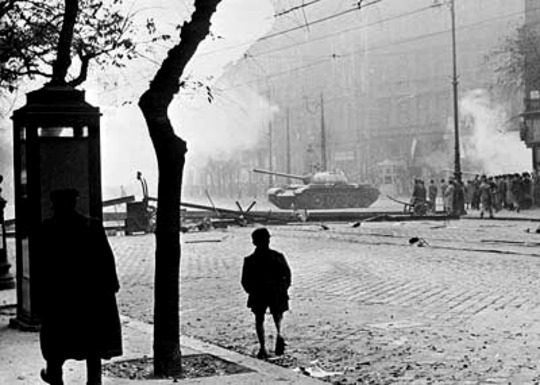
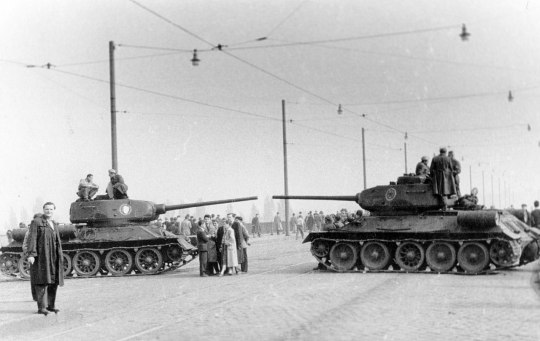




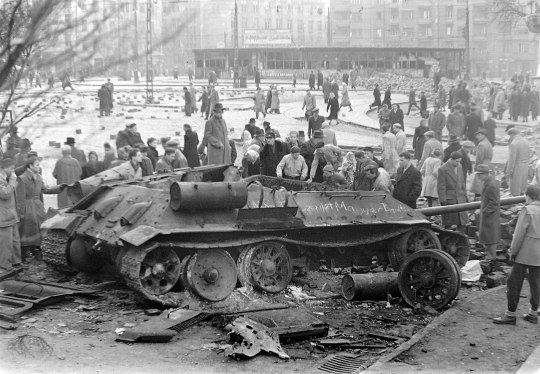
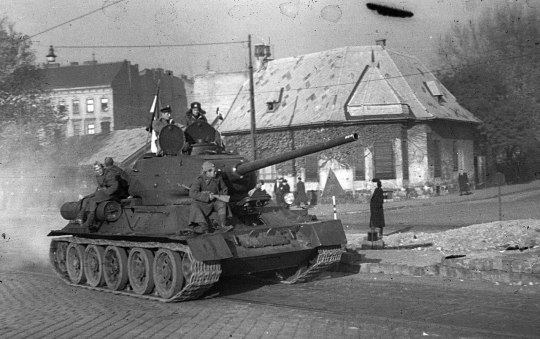

Tanks in Budapest, 1956.
#1956#homeland#budapest#history#1956. Október 23.#hungary#1956 Hungary#1950s history#soviet#magyar történelem#hungarian history
16 notes
·
View notes
Text
The Lost Grand Duchesses part 2: Alexandra Pavlovna
When she was born at 7:40 in the morning in 1783, the baby Grand Duchess Alexandra Pavlovna was instantly viewed as second class. Her grandmother, Catherine II ‘the Great’, wrote “I infinitely more like boys than girls”, and told her staff that she found the newborn to be very ugly. She called the baby “a very ugly creature.” This dislike of Alexandra continued into her toddler years, when Catherine continuously compared the young Alexandra to her baby sister, insisting that little Elena was much more charming and intelligent than Alexandra.
Despite this, Alexandra adored her grandmother, who wrote that the little girl would do “anything just to please me.” Alexandra and Elena were painted together as a gift to Catherine, and the two little girls lovingly hold up and caress a diamond encrusted miniature portrait of their grandmother.

By the age of four, Alexandra’s education had begun, and her intelligence in languages (being fluent in four) and writing made Catherine finally pay more attention to her, but for entirely different reasons.
As soon as the little girl turned eleven, Catherine wrote that the little girl who loved to dance, draw, and play music, was now to be “considered an adult”, and be made to marry. “It is time for the older one to get married” she concluded, not even mentioning Alexandra’s name.

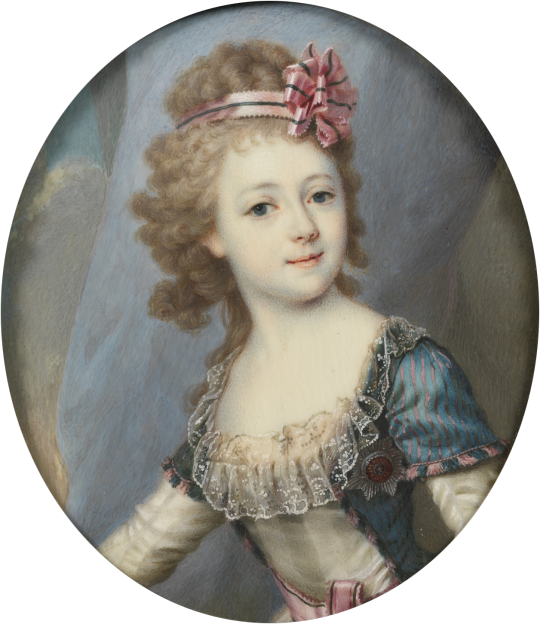
A long and embarassing debacle followed, in which the child was left at the alter. Catherine admitted that the young girl, not yet a teenager, often adopted a “confused look” when having to meet with potential husbands, and did not want to speak to them.
Catherine died in 1797, temporarily putting Alexandra’s fate in limbo. She returned to her daily life as an unmarried girl, and even published anonymous articles that she had translated in French under the pseudonym ‘A’. However, in 1799, the prospect of an Austrian-Russian alliance was apparently too attractive to pass on, and the thirty-year-old Archduke Joseph of Austria, the Palatine of Hungary, travelled to Russia to meet the thirteen-year-old Alexandra.
The marriage was finalised, and Alexandra was forced to leave Russia - and her family - in order to move to Hungary with her new husband. Joseph wrote a letter to his brother in which he stated he was “convinced that with this marriage my domestic bliss is assured for the entirety of my life.”
Alexandra, on the other hand, was miserable. Countess Varvara Golovina, a lady at court and potential lover of the Tsarina Elizaveta Alexeievna, wrote in her memoirs that Alexandra was sad, and did not want to be forced to leave Russia. Her father, Pavel I, constantly said that he would “not see her again” and that she was “being sacrificed.” Despite this, Pavel could have prevented the marriage at any time. A single lock of golden hair fashioned into a flower was all that she left behind.


Although Alexandra was popular in Hungary among all classes, she was deeply depressed. Her friendly and charming personality had been replaced by a new temperament which was “always serious and sad”. Alexandra especially did not get on well with her mother in law, the Empress Maria Theresa of Hungary, who was intensely jealous of the young girl’s popularity. Maria Theresa intentionally antagonised the teenager, and sought to treat her badly.
In 1800, Alexandra fell pregnant, and was struck with health problems. Her mother-in-law ordered the hiring incompetent doctors (known to her to be incompetent) and insisted that the doctors obey her orders, rather than present their own educated solutions. Orders from Maria Theresa included cooking meals which Alexandra would not be able to eat, making her weak and frail.
In March 1801, Alexandra gave birth to a little girl, named Alexandrine of Austria. The pregnancy and labour had been incredibly difficult, and the baby sadly passed away within a few hours of birth. Alexandra, depressed at having been forcibly taken from her home and after having to endure cruel treatment by her mother-in-law, said: “Thank God that my daughter was now with the angels, without experiencing the miser that we are exposed to.”
Alexandra contracted puerperal fever. The doctors misdiagnosed her poor health after the birth several times, treating her for gastric diseases and typhoid rather than ‘childbed’ fever. She succumbed to the disease aged just seventeen years old.
Alexandra was not buried until two years after her death due to disagreements in the Catholic Austrian court over where to bury a Russian Orthodox. In 1981, thieves broke into Alexandra’s Mausoleum, looting her coffin and taking jewellery and clothing from her remains. Due to the vandalism, she was reburied with the deceased wives and children of her husband in the crypt of Buda Castle, which went against her wishes to be buried in an Orthodox Church. In 2004, she was reburied at the Üröm Mausoleum, in a small park surrounded by a moat. Inside the tomb, Orthodox icons line the walls, a reflection of Alexandra’s beloved faith, and her deep connection with Russia, which endured even after being “sacrificed”.
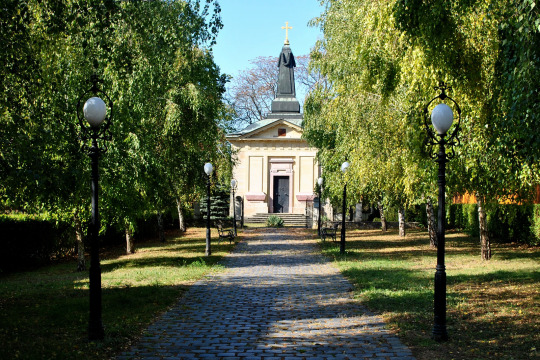
#the lost grand duchesses#alexandra pavlovna#what happened to her was so preventable#they just didn't love daughters enough to care#1700s#1800s#womens history#romanov#romanov family#russian history#hungarian history#pavel i#paul i#tsar paul#get the tissues out#justice for alexandra#the alexandra curse
14 notes
·
View notes
Text

Men and women kneel in prayer, fingering their rosaries, during a demonstration in City Hall Plaza, February 8, 1949. They are protesting the conviction of Josef Cardinal Mindszenty for his opposition to Soviet rule over Hungary. (During the war, he had also opposed the Nazis.) The Cardinal was sentenced to life imprisonment in Budapest on charges of treason.
Cardinal Mindszenty spent eight years in prison before being freed during the 1956 uprising. He was given political asylum in the American embassy in Budapest, where he lived for 15 years. He left the country in 1971 and died in exile four years later.
Photo: Robert Kradin for the AP via U.S.-Ukraine Business Council
#vintage NY#Cardinal Mindszenty#Robert Kradin#Feb. 8#February 8#demonstration#Catholic Church#protest#Stalinism#treason#Soviet Union#Hungary#Hungarian history
41 notes
·
View notes
Text

Happy..-what should I call this day?- for Hungary!!
Since today is the 940th anniversary of the consecrate of the first king of Hungary, I. István (I. Steven, I guess..), who spreaded western christianity in Hungary 1001-1038 (his reign), I thought I make a little, hmm.. parody out of it.
He is the man next to Hungary's right elbow.
Hungary says: "Benedicat tibi Deus!" (latin) - God bless you! (since she is also spreading christianity)
And yep, pour me with critism, please! I like this artstyle, and I wonder, what do you think about it?
For more ramblings about this topic, you can always click "Keep reading"~
So, about the celebrateds. I. István is a really important figure of the hungarian nation, his face is even printed on the 10000 HUF banknote:
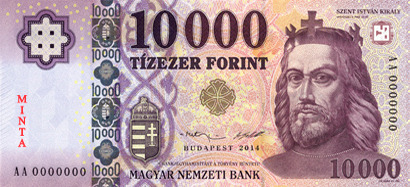
He had a little struggle with the inheritance, but in a nutshell, he managed to beat up the other racer named "Koppány", with german help. (He then chopped Koppány to 4 parts, and hanged out these parts on different castles, to show, he isn't someone to mess with.)
He was really strict with christianity and reign, as he claimed much territory for his own, in today lands of Romania, Slovakia and even Bulgaria too.
But overall, he mainly was distracted by Hungary and its domestic politics. He made up the structure, and the 'currency', which was pretty precious and famious, as there were found counterfeits in Scandinavia!
And if I didn't made it obvious, he cared a lot about christianity, as he created the first archdioceses. (Esztergom, Kalocsa-> which I have as background in the drawing!)
King István supported the parishes, and even the pilgrims.
He even has legends, which are pretty cool.
You can ask, though I think my answer won't be too surprising-
Why does Hungary speak latin instead of hungarian?
In the medieval times, latin was the usual used language, especially in creations, such as poems and documents, as a heritage of the religion.
What about the guy in the lower left corner of the drawing?
Well, hungarians didn't really appriciated that they literally will live a new lifestyle, as they were kinda nomad before the kingdom. And as I said, I. István was kinda strict about his ideas (see: Koppány).
What do you, hungarians celebrate exactly at augustus 20th?
In 1083, King I. László decided to consecrate I. István. The planned date was augustus 15th. (the day of the death of I. István, and also
Blessed Lady), however, they were unable to open the coffin István's corpse was in (they needed the dead body for the ceremony).
But! They finally managed to open up the coffin at augustus 20th! And the first King's body was covered in a pink water, and the corpse had the scent of balm. This opening was followed by the magical healing of many! Pretty cool, right?
-> And our first king finally wore the name I. Szent István (I. Saint Steven) since that day. We celebrate this specific event of the hungarian history.
(Feel free to as me, if you're interested in Hungary, and its history. I can try to be a little guidebook for ya!)
19 notes
·
View notes
Text

Day 23: Ilona Zrínyi!
Ilona Zrínyi was born into a powerful family in what is now Croatia. Her mother was a noted poet, and Ilona was very well-educated - both in literature and in politics. Her father was the Ban, or viceroy, of Croatia, ruling it as governor for the Holy Roman Emperor, but he dreamed of independence for what were known as the Lands of the Crown of St Stephen, centered in modern Hungary - and after success in the war against the Ottomans, success he felt he received little credit for, he intended to seize it. The ensuing rebellion, and her father’s subsequent execution by the Emperor, stamped a deep mark on Ilona’s life.
Her first husband, Francis Rácóczi, had been a political ally of her father’s, but soon he too was dead, leaving Ilona a widow with two children. She retained custody of her son (no guarantee for a noble widow at the time), and therefore of her late husband’s lands, making her a powerful political force. She threw these resources behind the cause of independence, alongside her next husband, Emeric Thököly, a rebel count who had allied with the Ottoman Empire to attack the Habsburgs directly.
The war went poorly. After the Battle of Vienna, the Ottoman retreat left Emeric and Ilona at the mercy of the Habsburgs. Soon, they had only one castle left - Munkacs, in modern-day Ukraine. For three years, Ilona resisted the siege alone.
She finally surrendered in 1688. Her children were taken from her, and only a prisoner exchange let her join her husband in his Ottoman exile. Her legacy, however, lived on. Her son, Ferenc, would continue his mother and grandfather’s fight; though he too was eventually defeated, both of them are remembered as Hungarian national heroes.
#ilona zrínyi#zrínyi ilona#hungarian history#croatian history#history#awesome ladies of history#october 2023#my art#pen and ink
5 notes
·
View notes
Text

"Forever caught between East and West, the capital of Hungary encapsulates the drama of central Europe in its wonders and horrors. The author, who left the city as a child after the uprising against communist rule in 1956, excels in describing Budapest’s Habsburg heyday, the historical role of its Jewish population and the hubris and humiliations that have helped shape the city."
17 notes
·
View notes
Text
https://mediakron.bc.edu/ottomans/turkish-bombard (Preview for this link not working today, okay)
Includes my favorite siege weapon story with the Dardanelles Gun
This thing is *MASSIVE*. Beefy cannon, made by Musir Ali, originally from Hungary.
First pitches it to the Byzantine Empire, but because the damn cannon's so expensive, they say no. He goes "hm. Okay", turns right around, and goes "HEY OTTOMANS, WANT MY GUN?"
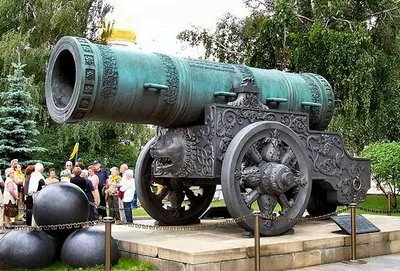
There are bigger guns, but this is still one of my favorite Brooklyn Supremes of gun
#siege engineer#siege history#siege weaponry#dardanelles gun#great turkish bombard#byzantine#ottoman#hungarian history#musir ali#cannon
8 notes
·
View notes
Text
June 4th, 1920. Day of the Treaty of Trianon.
On this day, the Hungarian delegation signed a treaty that sealed the fate of the nation. We lost more than ⅔ of our country.

After the First World War, Mihály Károlyi, who did not know how to lead took over the power of the country. This man disbanded the army returning from the war because he was so pro-peace. However, Károlyi did not see that this was a huge mistake, because the country was hit by smaller attacks and he did not want to defend, so control slowly slipped out of his hands.
Károlyi resigned and was replaced by a party allied with the Soviet Union, so the country was suddenly under communist rule. The communists were in the country for 133 days and I won't rant about it for a long time because we all know what it's like when they rule. Though we can thank them for creating a strong, unified army that recaptured the Highlands in two weeks. Just a bad decision as a result, half the army withdrew and the communists resigned too, so we were left alone with a vulnerable country.
Meanwhile, the Romanians attacked us, and a very small part remained for us, around Lake Balaton. The different governments changed each other every week, and in the meantime a letter arrived from Paris. Of course, that was an invitation to the peace talks, but everyone knew that this would not end well. Yes, the country came out of the world war as a loser, but then it was still part of the Austro-Hungarian monarchy. Necause when the Germans dragged the Austrians into WW1, the then Hungarian Prime Minister (István Tisza) said that there was no question of war, but there was not much of a choice.
Count Albert Apponyi and Pál Teleki went to Paris to convince them of the better fate of the country, because a large part of the Hungarians would have been sent across the border. Teleki made a map, on which he marked the areas inhabited by Hungarians in red, and asked that the border line be drawn outside them. Apponyi gave a famous speech in English, but when the French responded in their own language, he gave it in French as well. Then in Italian. Then in Russian. The delegation was impressed, but not pardoned.

The new prime minister, Miklós Horthy, refused to sign the contract, so two insignificant people were sent. One of them signed while standing because he didn't want to pay respect.
The country decreased from 282,000 km² to 93,000 km². 3,3 million Hungarians crossed the border. The Hungarian army was capped at 35,000 and reparations had to be paid.
Hungary suffered greater losses than the Germans.
„Szánd meg Isten a magyart
Kit vészek hányának,
Nyújts feléje védő kart
Tengerén kínjának.
Bal sors akit régen tép
Hozz rá víg esztendőt,
Megbűnhődte már e nép
A múltat s jövendőt!“
Kölcsey Ferenc: Himnusz (részlet) (1823)

#hungary#1920#trianon#trianoni békeszerződés#magyar#ww1#1920 june 4th#károlyi mihály#tisza istván#gróf apponyi albert#teleki pál#history#hungarian history#horthy miklós#magyar történelem
10 notes
·
View notes
Text
SOME INFORMATION ABOUT DRACULAURA’S CULTURAL BACKGROUND. - made by someone who is part of her culture.
Before I get into this, I want to say that I have already posted this on twitter but I know there’s some who don’t use twitter and I just wanted to share my thoughts here, too. Hopefully with more organized details than on there.
Also, heads up, I am NOT a historian. I study history for fun and I want to be a historian, however I am not in any way a professional. However I am Eastern European - mainly Slavic and Hungarian, so this is my history that I am talking about. To make this thread easier to read, I will be calling Draculaura “Lala”, just so we don’t confuse her with her father.
Lala was born in Romania (Eastern Europe), in 412 AD.

Some say she was born in the Roman Empire, but that province of Romania would be called "Roman Dacia" and it lasted until 271 AD. So, that isn’t fully correct.

The Roman Dacia was also a part of Transylvania. Transylvania is a historical region of Romania. It is not a fictional place.

Draculaura was born to human parents, Camille and Gaius, the latter being a soldier. This makes Lala Romanian by birth, however do not confuse the terms "Roman", “Romani” and "Romanian" because they're three different things.
Roman: an inhabitant of the Roman Empire.
Romani: a member of an ethnic group originating in South Asia, living widely dispersed across Europe and speaking a language that is related to Hindi.
Romanian: a native or inhabitant of Romania, or a person of Romanian descent.
Gaius died in battle and this left Camille alone. Gaius was related to someone Dracula was close to. Dracula then took them to his home to help them out. It is said in Lala’s collector doll diary that Dracula took them to Dacia however, the Dacian kingdom only lasted from 106 to - 275 AD.
Q: Who even is Dracula?
A: Dracula is a story written by an Irish author called Bram Stoker. Dracula is a vampire living in Transylvania. In his novel, Dracula claims to be Székely.
Q: What does székely mean?
A: Székely people are ethnic Hungarians living mostly in Romania. They were first mentioned in 1116 AD and according to Szádeczky-Kardoss Lajos "they believe themselves to be descendants of the Huns".
image: Székely people in their cultural clothing

Q: Then who are the Csángó people?
A: The Csángós are also an ethnic Hungarian group inhabiting the Moldavia region of Romania, but mostly of Catholic faith. They speak in the Csángó dialect. Some Csángós also live in Transylvania.
image: Csángó people in their cultural clothing

Q: Then who are the Huns?
A: The Huns were nomadic people who lived in Central Asia, the Caucasus, and Eastern Europe between the 4th and 6th century AD. Scholars generally agree that they originated in Central Asia but disagree on the specifics of their origins.
Often Dracula is confused with Vlad Tepes. This is quite easy to confuse because Vlad is often called Vlad Dracula. Vlad Tepes, better known as Vlad the Impaler or Vlad III, Prince of Wallachia was born in Transylvania and his father was Vlad II Dracul (meaning dragon in LATIN), ruler of Wallachia.
Q: If dracul means devil in Romanian, how is it possible that Vlad’s surname isn’t in Romanian?
A: This is actually very easy to explain! Vlad was a Christian ruler. Christian monarchs in the medieval times used Latin because it was the language the Bible was accessible in. This caused a lot of problems for the poor people who didn’t speak Latin, and to explain this I’d have to talk about the English reformation, but that’s a topic for another day and very unrelated.
Q: So, how did Vlad get that surname?
A: Dracul was a surname granted by the Order of Dragon. Order Of The Dragon, aka "Societas Draconistarum" was a monarchical chivalric order only for selected higher aristocracy and monarchs. This name is in Latin, not Romanian, therefore Dracul here means dragon and not devil.
Q: But why is it the same word then?
A: Because Romance languages adopted a lot of their vocabulary from Latin. In the past, dragons were associated with the devil.
The dragon here is part of the symbol of the Order of Dragon. On the back of the dragon, from the base of the neck to the tail, is the Red Cross of Saint George.
Q: So, Dracula isn’t the same as Vlad then?
A: Nope! Even if Bram Stoker was inspired, it doesn't make Vlad Tepes the same as Dracula, the fictional figure.
It seems Dracula and Camille were very much in love. When Lala was born, she was named in honor of Dracula. Laura was the name given to her by her mother and Dracula because of her step-father. This actually makes sense in the way Hungarian people have their names!
The surnames always come first in Hungarian. So, Lala getting her surname from her step-father makes a lot of sense. But of course, this is also a fictional character so her name is a pun.
Camille died in a plague while Dracula was away doing business in Rome. When he came home, he realized Draculaura was sick too so he converted her into a vampire.
She was then raised in the Vampire Court, with Elissabat and Valentine.
Q: But isn’t Valentine Irish?
A: Yes, he is! Confirmed by one of the old Monster High writers, Valentine was born in 410 AD. Apparently, at the age of 17 he and his mother were forcibly turned into vampires to fight a war against werevolves. Stoker saw potential in Kieran and helped him get introduced to the Vampire Court where he met Lala. (my source is from Twitter, so do take this with a pinch of salt, but it does sound likely)
Elissabat on the other hand, as far as we know, is Transylvanian. Her name would be Erzsébet in Hungarian. The name could’ve been inspired by Erzsébet Báthory.
Q: So, when did Draculaura and Dracula settle in the USA?
A: This is quite unclear. I would say it was either in the late 19th or 20th century. What we know is that it happened because they mistook her eating a tomato for blood and the normies wanted to attack vampires. This instance is actually quite similar to how some Hungarians living in Romania were treated.
It happened especially during the Hungarian revolution of 1848 that thousands of Transylvanian villages with a Hungarian population were attacked. This is, of course, just me giving historical context and not saying this is what happened to Lala. It obviously didn’t.
Let’s dicuss Lala’s accent now. I’ve seen people call it Romanian, Hungarian, Transylvanian, Romani, Russian... Anything you can imagine.
Russian is incorrect. Draculaura is not from Russia nor is she Slavic. Being Slavic also doesn’t immediately give you a Russian accent. These are the Slavic countries:
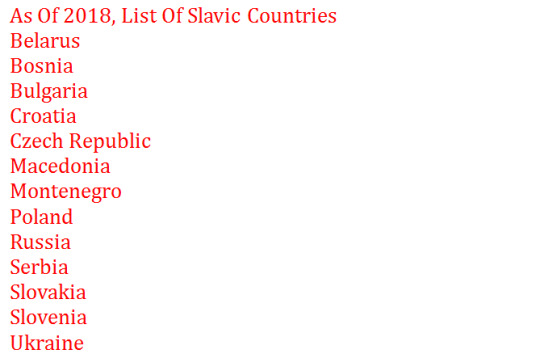
Romanian is a romance language while Russian is a Slavic language. Lala wasn’t in Romania during the Soviet occupation.
To further understand Lala’s accent we have to go back to the first portrayer of Dracula - Béla Lugosi. He portrayed Dracula in the 1931 movie with the same title.
Béla Lugosi, born as Béla Ferenc Dezső Blaskó was a Székely man born in Lugos (in Romanian Lugoj) which was then part of the Hungarian Kingdom. He had a very obvious Hungarian accent which inspired a lot of other Dracula and vampire portrayals.
I have seen many discuss that Lala indeed does not speak with a Romanian accent. And that is true, she does not because Dracula's first language is Hungarian.
As her parents died at a young age, it's obvious to me that she grew up speaking Hungarian with Latin and Romanian as her second / third languages.
Q: Why Latin?
A: Many European nobility spoke Latin for multiple reasons, including religious.
Q: So, what is Draculaura’s ethnicity then?
A: Ethnically she would be Romanian and culturally Székely, belonging to a Hungarian ethnic minority.
Draculaura would either way be very much fluent in Hungarian as she lived under the Hungarian Kingdom. She lived through a lot of things - including the battle of Mohács, the ottoman occupation of Hungary, Austria-Hungary, the treaty of trianon that made Transylvania part of Romania and so on.
As a person who also belongs to a Hungarian minority and lives in a country that doesn’t have the same national language as my native language, I can very much relate to Draculaura. I feel represented by her. Her accent is quite realistic, many Hungarians have thick accents. Her voice actress did an amazing job portraying her.
Let’s normalize characters with obvious accents. Draculaura wasn’t just comedic relief. Not at all - in fact, she was representation to many Romanian and Hungarian kids. Even immigrant kids. Portraying immigrant characters in a good light is very important. Calling her accent exaggerated, unserious and over the top is not only offensive to non-native English speakers but is also fully ignorant. Having an accent is a cultural thing and should not be made fun of.
Thank you for reading my thread! If you have any questions, please leave them below in the comments.
#draculaura#monster high#székely#hungary#hungarian history#hungarian#monster high live action#character background#accents#eastern europe#representation#mh#mh characters#dracula#fictional characters#classical literature#béla lugosi#live action monster high
88 notes
·
View notes
Photo





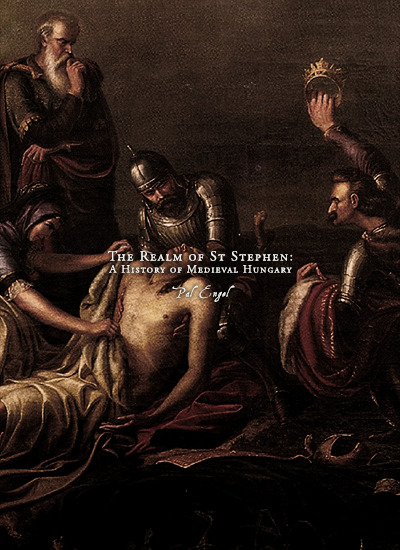
Favorite History Books || The Realm of St Stephen: A History of Medieval Hungary by Pál Engel ★★★★☆
This book was written for the non-Hungarian reader who wishes to discover what happened in the Carpathian basin during the Middle Ages. It is to be hoped that nobody living in that region who has strong national feelings will find comfort in it. Each of the nations of the region has its own vision of the past, incompatible with that of the others, and it was my firm intention that none of these visions should be represented in this volume. ...
Hungary is now one of the smallest countries of Europe. This book, however, is concerned with the medieval period, and here the name ‘Hungary’ will refer to the former kingdom of Hungary, which (even without the kingdom of Croatia which was once united with it) was more than three times larger than the present-day republic, and also somewhat larger than the combined area of Great Britain and Ireland. It extended over the whole of the Carpathian basin, including not only present-day Slovakia, but also considerable parts of Romania, Ukraine, Austria, Yugoslavia and Croatia. Although the kingdom of Hungary ceased to exist as an independent country at the end of the Middle Ages, politically it survived as an autonomous part of the Habsburg Empire until the end of the First World War in 1918.
The medieval kingdom of Hungary was born in a geographically well-defined region that is usually called the Carpathian basin. This is the drainage-area of the middle Danube valley, and is named after those mountain ranges with 2000 metre peaks that border it to the north, the east and the south. It is divided by the Danube into two parts of unequal proportions, and its centre is surrounded by mountain ranges of medium height. The region to the west of the Danube has been called Transdanubia since the period of the Ottoman occupation when the capital of the country was temporarily moved from Buda to Pressburg, on the northern bank of the river. The climate here is predominantly temperate, with a relatively heavy rainfall. This is a fertile landscape with hills of modest elevation interrupted by valleys and basins, and with the Balaton, the largest warm-water lake in Europe, at its heart. There are also mountain ranges – the Mecsek in the south-east, the Bakony and the Vértes north of the Balaton – but none rises higher than 600 metres. The landscape east of the Danube is profoundly different. The Great Hungarian Plain, which stretches without a single hill from Budapest to Oradea in the east and Belgrade in the south, can be regarded as a kind of appendix to the Eurasian steppe. The climate is rather more extreme here, with hot, dry summers, but the region is abundantly supplied with water by its main river, the Tisza, and its tributaries, which, before the nineteenth-century regulation works, meandered across the Great Plain. These rivers were flanked by marshlands, swamps and inundation forests, and also by fertile pastures and meadows, offering favourable conditions for fishing and livestock breeding. To the north, east and south-east of the Great Plain, in present-day Slovakia and Romania, there are mountain ranges that become progressively higher as one travels outwards from the Plain. They were formerly extremely rich in minerals; but, with the exception of the valleys, they have never been propitious to human settlement. Consequently, until the late Middle Ages these mountains were covered by forests and largely uninhabited, and colonization of them continued into the early modern period.
#historyedit#house of arpad#hungarian history#capetian house of anjou#medieval#european history#history#history books#nanshe's graphics
23 notes
·
View notes
Text
Hello tumblr! Szerintem még nem írtam filmkritikát ide ezelőtt, de mindenre megvan az első alkalom.
A mai filmünk az új 2024 március 14-én bemutatott Most vagy Soha!
Az élmények még nagyon frissek, de sajnos azt kell bevallanom hogy nekem tetszett a film. Tudom, meglepő, hogy úgy kell beharangozni azt, hogy valami tetszik, hogy "sajnos".
Ezt többek között a film IMBT értékelése miatt monom ami kemény 1.1 csillagon áll az én filmkritikám megírásakor.
Voltam sikeres abban a szituációban lenni, hogy fogalmam sem volt a filmmel kapcsolatos akármilyen reklámozási vagy gyártási információról. Tehát ilyen szempontból a véleményem független.
Na akkor most a filmről:
Nekem tetszett. Történelmi film ami egyik legfontosabb eseményünket dolgozza fel. Számomra megtette azt az egyetlen dolgot, amit egy történelmi filmnek meg kellet tennie. Felkelteni az érdeklődésemet a benne lejáttszódó események és a benne szereplő személyek iránt. Mivel még nem végeztem nagyon mély kutatást a Március 15-ei forradalommal kapcsolatban, így nem tudok a történelmi hűségéről beszélni. (Annyival tisztában vagyok hogy a nem forradalmi szál teljesen fiktív volt.)
Vizuálisan nagyon ott volt, a kosztümök és a díszlet megadta a hangulatot. A színészjátékkal szemben nincsenek kivetéseim. A vágással sem. A zenei aláfestés is nagyon illet. A kritika amit ezekre hallottam az a túlhasznált volt ami szerintem ha nem vagy nagy moziba járós akkor nem fog feltűnni.
A cselekmény érdekes volt. Igen, ez nem egy olyan film volt ami igényelte a folyamatos figyelmedet és agyi munkádat. Ami nem egy rossz dolog! Vitatkozhatunk arról hogy egy történelmi filmnek minek kell és minek nem kell lennie, de nagyobb nézőcsoporthoz való elérés érdekében valamire áldozni kell.
A karakterek nem annyira elmélyítettek ami a forgatókönyvön van és nem a színészeken, bár hozzátenném, hogy mélységet adni amikor egy ekkora szereplő gárdával dolgozol, nem éppen a legkönnyebb feladat. Ezt kijelenthetem, mert ismerem a helyzetet. Nem is nevezném túlzottan realisztikusnam az elvárást, úgy hogy ne térjünk el nagyon a fő történet száltól.
Újranézős-e a film? Talán. Én biztosan újranézném majd a jövőben (feltehetőleg egy füzettel amiben a történelmi személyekről és az eseményekről vannak hosszú jegyzeteim).
A filmek szubjektívek, valaki szemete más aranya és így tovább. Mindenesetre nekem inspirációt adott egy kis írói szösszenetemhez és motivációt, hogy kezembe vegyek egy Jókai Mór könyvet.
Fenntartom a véleményem megváltoztatásának jogát és remélem, hogy nektek is tetszeni fog legalább egy kicsit ez a film.
#most vagy soha!#historical movies#historical fiction#magyar történelem#magyar tv#film#filmkritika#history#hungarian history#1848#march 15#march 15th#magyar irodalom#jókai mór#magyar tumblr#tumblr magyarorszag#hungarian tumblr#tumblr hungary#magyar film#magyar#hungary#hungarian revolution#magyar forradalom
3 notes
·
View notes
Text


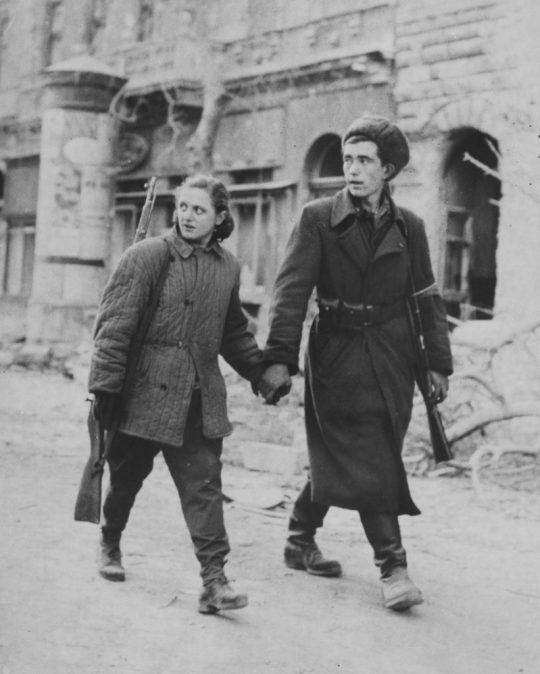

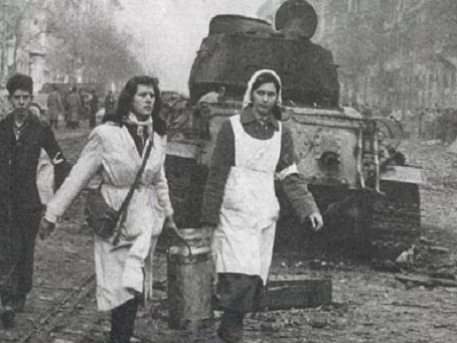

Hungarian freedom fighters, 1956.
…Piros a vér a pesti utcán.
Eső esik és elveri,
mossa a vért, de megmaradnak
a pesti utca kövein.
Piros a vér a pesti utcán,
munkások - ifjak vére folyt,
- a háromszín-lobogók mellé
tegyetek ki gyászlobogót.
Tamási Lajos: Piros a vér a pesti utcán
#1956#homeland#hungary#magyar#1956. Október 23.#history#hungarian history#magyar történelem#1950s history
18 notes
·
View notes
Text
Huey, Dewey, Louie, and a Magyar PM’s Demise
While touring Budapest during the Balkan Explorer Tour via Expat Explore in 2023, the free day coincided with Philippine Independence Day – also MY 34th BIRTHDAY. Being a Disney fan myself, the city’s sights brought up DuckTales.
And I do mean the original 1987-1990 run.
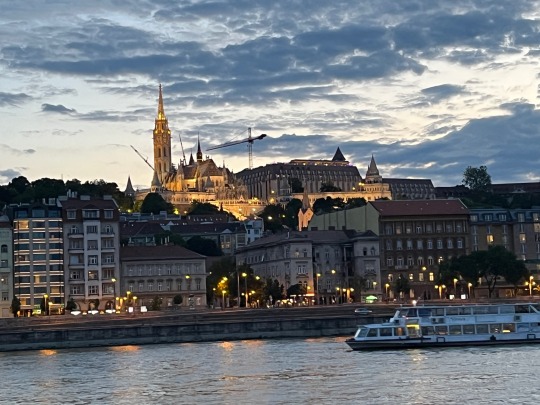
Photo taken 6/12/2023.
So what does a Disney animated series have to do with Budapest – or rather, the whole country of Hungary? Ask any resident who was between 3-12 years old and living in said country on December 12, 1993, and they’d likely tell you that something somber interrupted an episode of it.
Picture if you will being a kid watching Disney Sunday, the equivalent of America’s The Disney Afternoon in a post-Cold War Hungary (or a few other European countries) on that day. The theme song plays as normal.
“It will never leave,” said Doug Walker, the Nostalgia Critic. “it will never leave. It's like an addiction. You think you're over it. You think, “I only know a few lyrics of the song…’”
“Life is like a hurricane
Here in Duckburg
Race cars, lasers, aeroplanes
It’s a Duck blur
Might solve a mystery
Or rewrite history."
“DuckTales, woohoo!
Every day that I've been making
DuckTales, woohoo!
Tales so daring, do-bad and good
Luck tales.”
“D-d-d-danger lurks behind you
There’s a stranger out behind you
Gonna find you
What to do?”
“JUST GRAB ONTO SOME
DUCKTALES!”
“WOOHOO!“
“I mean once you hear it once, it will never, ever go away. And you wanna know what the creepy thing is? I think this show stayed on the air strictly because of the theme song! I mean think about it, what do you actually remember about this show?”
Many a Magyar ‘90s kid’s disturbingly thorough answer came to a head during Uncle Scrooge’s breakfast conniption in the Catch as Cash Can story arc episode, “A Whale of a Bad Time.” He was dismayed and enraged when he lost half of his fortune via the boat containing it being eaten by a sea monster. As Huey, Dewey, and Louie restrained him, every TV screen in every Magyar household open to DuckTales desaturated, changed to static briefly, and went black for 15 minutes.
The Magyar Televízió logo appeared in a gloomy grayscale, accompanied by a track of the 3rd movement of Fredric Chopin’s Piano Sonata No. 2 in B♭ minor, Op. 35. It signified to Magyars of all ages – even and especially the perplexed ‘90s kids trying to make sense of whatever abruptly interrupted their DuckTales fix – that someone very important had died.
youtube
That someone very important was József Antall, the first democratically elected prime minister.
Shortly after his inauguration in May 1990, Antall was diagnosed with non-Hodgkins lymphoma. He underwent surgery that October, with him having an interview on the response to the taxi blockade in ihis sleepwear. His cancer recurred in May 1991.
Antall died in his sleep due to complications on December 12, 1993. Magyar adults and well-informed teens who knew and loved him were bereft of a strong leader in Hungary’s post-communist history, whereas befuddled kids wondered why the TV cared more of about a prime minister’s death over a Disney animated series.

Those children who grew up back then were dubbed the “DuckTales Generation.”
“I wanted to switch channels to see if there was another cartoon,” recalled one Magyar adult, “but my parents wanted to watch M1 because – unlike me – they knew who PM Antall was and why the news of his death was important.”
“As a result of the shock, I rushed to the bathroom,” recalled another, “but I could barely tell what had happened all the way through. My mom cried to my dad, ‘Antall is dead!’ And then they looked at me, over my head. The children watching DuckTales at the time experienced a minor trauma as they were torn out of the safe world of Disney magic – and the unknown, incomprehensible blackness came.”
“Chopin's funeral march and the deep blackness cast a pall over the country for just a couple of minutes.”
“I called my parents, ‘Dad, I think (Antall) had died,’” recalled the owner of conservative blog Meanwhile in Budapest.
youtube
The death announcement of Antall wasn’t the only kids’ show interruption in history. On June 2, 2020, Viacom-owned TV channels (including Nickelodeon) around the world interrupted TV shows with an 8:46 PSA.
The white text, “I Can’t Breathe,” faded in and out to the cadence of a sound effect of a human breathing. The duration matched the one in which Derek Chauvin held his knee down on George Floyd’s neck till he suffocated. Either a Color of Change text number or the Amnesty International website (depending on country) appeared alongside it.
The PSA scared some kids, which lead some of their parents to rant about it on the Viacom channels’ social media accounts, some with some political rebukes.
But whichever their political views, most Magyar children who grew up when a death of a beloved dignitary interrupted a Disney TV show in the ‘90s knew that their moment was a blindingly brighter lightbulb memory. Even a traveling exhibit by Magyar artists on the childhood children in Hungary spent between the late ‘80s and noughties was APTLY named after that episode of which doleful breaking news interrupted it.
As Walt Disney said, “Life is composed of lights and shadows, and we would be untruthful, insincere, and saccharine if we tried to pretend there were no shadows. Most things are good, and they are the strongest things; but there are evil things too, and you are not doing a child a favor by trying to shield him from reality.”
Simply put, life HAS BEEN like a hurricane, anywhere in the world, whether kids and parents like it or not.
Especially in early ‘90s Hungary.
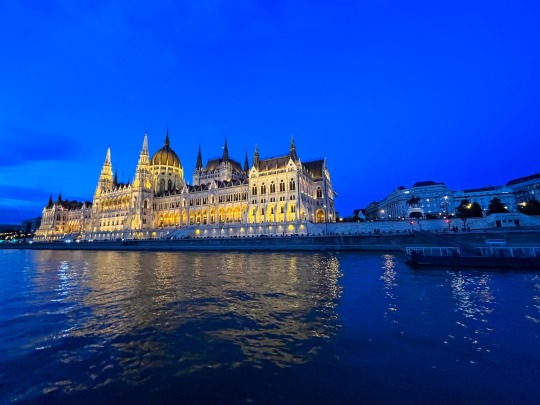
Photo taken 6/12/2023.
#ducktales#Antall Jozsef#hungarian history#expat explore#Budapest#1993#cold war#90s childhood#Youtube
5 notes
·
View notes